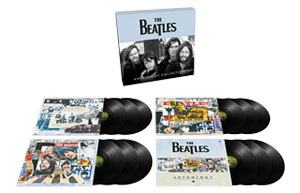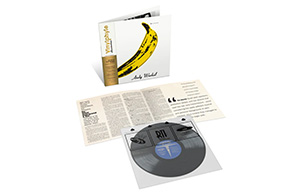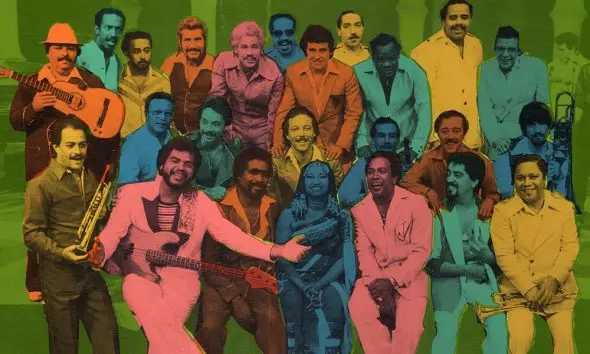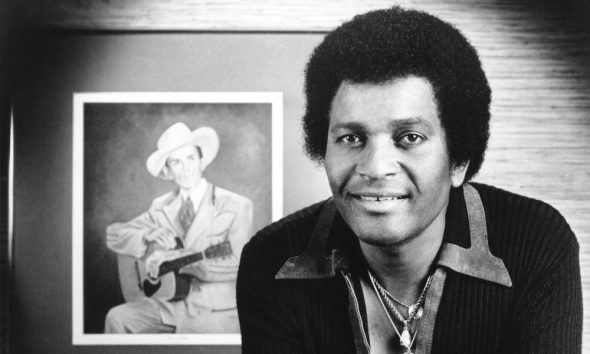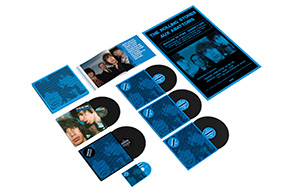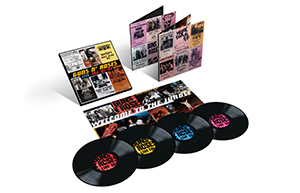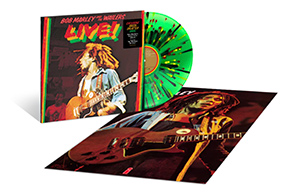Anarchy Around The World: Punk Goes Global
While the US & UK continue to claim the land rights, punk was an agent of change on a worldwide scale and its impact has affected all corners of the globe.
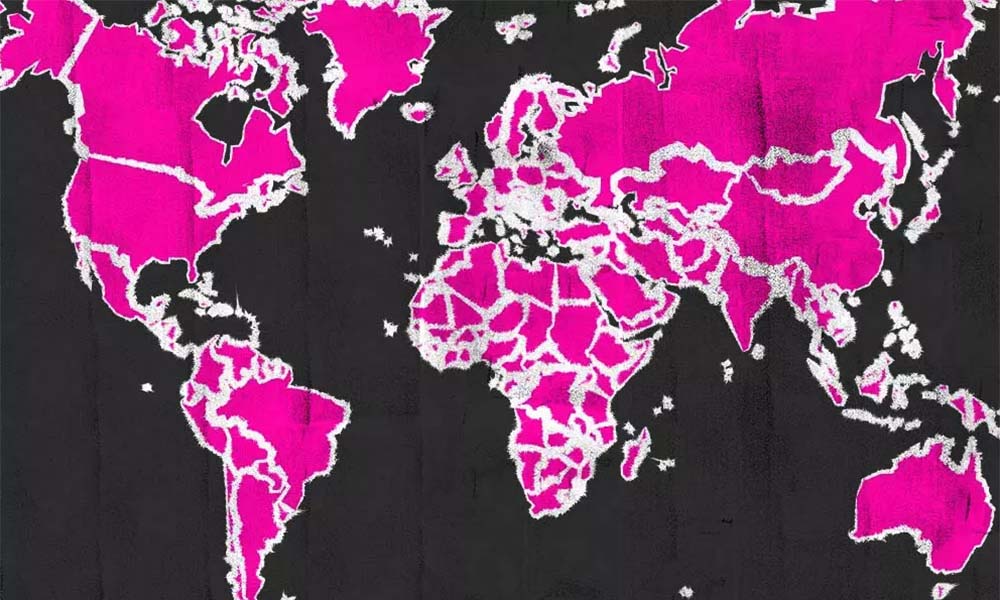
Decades after it officially crash-landed in our midst, it’s easy to believe punk “sold out” its lofty original ideals, not least because its leading acts all eventually signed to major labels and played ball with The Man. Regardless, punk still had a seismic global impact during the mid-to-late 70s and its legacy can still be felt in everything from its inherent DIY ethos to its (broadly) anti-sexist stance. However, while countless revisions of this flawed – yet exhilarating – period have since been published, they nearly always fix punk as a purely transatlantic phenomenon.
Listen to some of the best international punk songs on Spotify.
This is entirely understandable, as both nations have reason to claim punk as their own. In North America, the 70s had barely dawned before New York was spawning remarkable proto-punk acts such as Suicide and New York Dolls, while across 1974-76, trailblazing US refuseniks such as Pere Ubu, Patti Smith, Ramones, and Blondie were already hurling out remarkable, oeuvre-defining discs.
After the furore of Sex Pistols’ expletive-stuffed slot on Thames TV’s Bill Grundy-hosted Today show, however, the emphasis shifted back to the UK, but as 1977 unfolded, fans marvelled at staggeringly diverse, future-embracing LPs from both sides of the Atlantic, ranging from Television’s Marquee Moon and The Dead Boys’ Young, Loud & Snotty to The Damned’s Damned Damned Damned, The Jam’s In The City, and Sex Pistols’ infamous Never Mind The Bollocks, Here’s The Sex Pistols. Playing down the importance of these epoch-encapsulating records or denying their influence on much of the music created over the past 40 years is nigh-on impossible, yet while both the US and UK continue to claim the land rights, punk has proved to be an agent of change on a far wider scale, and its impact has been felt in all corners of the globe.
Punk around the world: Australia revolts
For example, while John Lydon may have pointedly referred to “the fascist regime” on Sex Pistols’ notorious “God Save The Queen,” the Australian state of Queensland was then ruled by a formidable ultra-right-wing dictator, Joh Bjelke-Petersen. Also the subject of The Stranglers’ 1979 Top 40 hit “Nuclear Device,” Petersen utilised a corrupt police force to violently suppress demonstrations, bugged his political opponents and gerrymandered election counts to ensure he remained in power until 1987.
However, Bjelke-Petersen’s oppressive regime couldn’t prevent the rise of arguably Australia’s fiercest original punk band, The Saints, who hailed from the Queensland capital of Brisbane. Despite their global isolation, the band’s abrasive, independently funded debut 45, “(I’m) Stranded,” caused a stir in the UK where it received the coveted “Single Of This And Every Week” award in weekly rock mag Sounds in September 1976.
Arriving a month prior to the release of The Damned’s “New Rose” (the UK’s first proper punk 45), “(I’m) Stranded” hooked The Saints a three-LP deal with EMI and led to a bona fide UK Top 40 hit with the adrenalized “This Perfect Day.” Perhaps more pertinently, however, The Saints’ success also inspired several of Australia’s most enduring rock outfits, groups who would also go on to achieve widespread international acclaim. Among their number were enduring Western Australian punks The Scientists; Melbourne punks The Boys Next Door (featuring vocalist Nick Cave and multi-instrumentalist Mick Harvey), who would shortly morph into The Birthday Party and, later, Nick Cave & The Bad Seeds; and also Sydney’s Radio Birdman. Released through tiny local label Trafalgar, this latter outfit’s incendiary 1977 debut, Radios Appear, became the first independently issued punk LP distributed via mail order in Australia. Its release helped lay the foundation for the country’s subsequent DIY explosion.
Wild youth: punk in South Africa
Bjelke-Petersen’s corrupt government also openly supported Apartheid-controlled South Africa: a tyrannical and officially racially segregated state where, during the 70s, newspapers were heavily censored and it was an offence for pictures of the (then imprisoned) African National Congress leader Nelson Mandela to be shown in public.
South Africa nonetheless gave rise to a healthy underground punk scene and, with hindsight, that’s maybe no surprise. Many of the contemporary South African bands were collectively frustrated by a repressive society where disco and soft rock ruled the airwaves; the political situation ensured that the majority of international artists boycotted the country.
Four of the best South African punk acts, The Safari Suits, Housewives Choice, Wild Youth, and National Wake, all appeared on the country’s first independently organized punk package tour, the Rock Riot jaunt of December 1979, and the last two recorded music on a par with the most vital punk records released on any continent. Durban trio Wild Youth’s brilliant, Stooges-esque 45 “Wot About Me?” can now fetch up to $1,000 on eBay, while Johannesburg quartet National Wake’s lone, self-titled LP (including the charged, anti-media-gagging anthem “International News”) was briefly released by WEA International in 1981 but was subsequently blacklisted by the South African authorities and removed from the shelves.
Though a dextrous, Clash-esque outfit capable of rousing punk, spacy dub reggae and African funk-flavored pop, National Wake sported a daring, multi-racial line-up which flouted the country’s draconian “pass laws” which restricted freedom of movement for black citizens outside of their allocated Townships, but they eventually split after the authorities repeatedly raided their communal home in Johannesburg’s Parktown district.
Sadly, both Wild Youth and National Wake expired prematurely, but a later generation of South African bands, such as Cape Town’s The Genuines and the hardcore-inclined Powerage, continued to needle the authorities during the 80s. Directors Deon Maas and Keith Jones’ acclaimed 2012 documentary Punk In Africa later diligently documented this activity, along with the country’s punk-inspired post-Apartheid acts such as Cape Town ska-punks Hog Hoggidy Hog and the grunge-influenced Evicted.
Anarchy in the EU
Back on the European mainland, bands on both sides of the divide in pre-unification Germany were galvanised by the promise of punk. Many of the earliest, such as Hannover’s Rotzkotz, Dusseldorf’s Male and West Berlin’s PVC were inspired by UK punk’s first wave (PVC forming after The Adverts played Berlin in February ’77), yet by the early 80s, West Germany had developed an eclectic punk scene of its own. This included bands as diverse as industrial/electro-pop pioneers Die Krupps, starker Hamburg post-punkers Abwärts and hardcore pioneers Slime. This latter group were seen as one of the progenitors of the “Deutschpunk” style of bands espousing radical left-wing politics in their lyrics and controversial, Cold War-related songs such as “Deutschland,” “Bullenschweine” and “Polizei SA/SS,” many of which were contemporaneously banned and/or censored.
Due to its unique position in Europe, with its different sectors split between the affluent West and the stark, repressed Eastern Bloc, the divided city of Berlin inevitably resonated with punks of all persuasions. Inspired by their brief trip to the city, Sex Pistols wrote “Holidays In The Sun” after observing the notorious Berlin Wall first hand, while the liberal-minded West Berlin contained one of Europe’s best punk/post-punk clubs courtesy of Kreuzberg’s SO36. A much-anticipated stop on most European punk tours, this venue (which took its name from the local post code) was even immortalized on wax when West London post-punks Killing Joke included the suitably brooding “SO36” on their self-titled 1980 debut LP.
Crucially, punk’s influence even stretched across the Berlin Wall, where a highly clandestine punk scene developed during the last years of the notoriously repressive German Democratic Republic in the mid-to-late 80s. Often referred to as “Die Anderen Bands” (“The Other Bands”), these outfits weren’t all strictly punks, as they also included electronic, blues and proto-indie outfits such as Herbst In Peking (Autumn In Beijing), though they shared a punk-esque spirit of independence: a trait which was frowned upon by the GDR’s notorious secret police, the Stasi.
Despite the restrictions, punk’s DIY aesthetic still brokered a few discreet breakthroughs in the GDR. Though only granted a limited pressing on East German state label Amiga (later sold to BMG National in post-unification Germany), the 1988 compilation Kleeblatt Nr 23: Die Anderen Bands included tracks from four bands, among them punk outfit Feeling B who featured Christian “Flake” Lorenz and Paul Landers, both later members of controversial German industrial metal titans Rammstein. Punk also played its part in the period known as “die Wende” (“the Turnaround”) during 1989-90, when the GDR’s Communist Party lost power to a democratically elected government after the Berlin Wall fell. Herbst In Peking’s “Bakschischrepublik” thus became the East German rock hymn to chronicle these rapidly changing times.
Latin American punk and “The East Side Renaissance”
Countries trapped behind the Iron Curtain weren’t, however, the only ones struggling against tyranny. Latin American countries such as Argentina, Brazil, Mexico, and Colombia all shared a history of dictatorships, poverty, and political repression, and in all these countries punk became the ideal vehicle for youths desperate to protest against the adversity and oppression they suffered.
Punk’s Latino lineage can be traced back to California-based outfits such as The Plugz, The Bags, The Zeros, and Los Illegals, while in the late 70s, Latino/Chicano punks in the East LA neighbourhoods (part of a movement known as “The East Side Renaissance”) organized gigs in their own communities.
During the 90s, too, punk as the form of protest became even more widespread, with US-based Latino hardcore bands such as Youth Against, Los Crudos, Huasipungo, and Tras De Nada all becoming operational as communities across the North American continent were hit by a series of potentially divisive political issues. These included Proposition 187 (a state-run screening system to prohibit illegal aliens from using non-emergency health care and public education in California), NAFTA (the North American Free Trade Agreement between the US, Canada and Mexico, which effectively cancelled Mexico’s Article 27, which prevented sale or privatisation of communal native land-holdings), and Mexico’s subsequent Zapatista Uprising: a rebellion organised in response to the implementation of the NAFTA agreement.
Contemporaneously, the Central and South American punk outfits from the late 70s and 80s remained obscure outside of their own continents, and in Brazil, Argentina, and Mexico the punk scene was initially established through the country’s more affluent youth, who had the financial means to obtain punk discs imported from the US and UK.
Nonetheless, healthy punk scenes eventually flourished in most of the South American countries, despite (or perhaps because of) the repression many people struggled against on a daily basis. Brazil, for example, was ruled by an authoritarian military dictatorship which initially deposed President João Goulart in 1964 and remained in power until 1985, during which time it stifled both free speech and political opposition. Yet a punk scene bravely grew up in opposition, with some of the founding names including Al-5, NAI, and Restos De Nada (Nothing Remains). Founded in Sao Paolo in 1978, the Stooges/MC5-esque Restos De Nada are generally regarded as Brazil’s first fully-fledged punk outfit, though it took almost a decade for their self-titled debut LP to surface, through the Devil Drives imprint, in 1987.
Argentina, too, suffered decades of repression due to dictatorships, military coups and the so-called “Dirty War” (state-funded terrorism meted out again supposedly socialist-leaning political dissidents, which led to the unlawful imprisonment and “disappearance” of thousands of citizens). Despite this, punk bands such as Los Violadores (The Violators), Alerta Roja (Red Alert), and Comando Suicida (Suicide Squad) sprang up during the early-to-mid 80s. The military government frequently attempted to censor Los Violadores, yet they successfully released a self-titled LP in 1983, while their 1985 single “Uno, Dos, Ultraviolento” (“One, Two, Ultra-Violence”) became a much-repeated anthem in 1985.
Chinese punk
The various dictatorships and military juntas in Latin America may allegedly have been fighting Communism, but the world’s most populous state, China, was in the vice-like grip of Communist rule after the Chinese Civil War ended in 1949. The country was still reeling from Chairman Mao Zedong’s “Cultural Revolution” (in effect a decade of political recrimination and social upheaval which adversely affected millions of citizens) when punk officially kicked off in the West in 1976.
The fact that the Chinese media was entirely state-run until into the 80s ensured that “Yaogun” (Chinese rock’n’roll) didn’t exist prior to that decade. It was only when indigenous artists such as Cui Jian (now known as “the father of Chinese rock”) started to come to prominence that disaffected Chinese youth began to question their repressive system.
A few “alternative” bands began operating in Beijing during the mid-80s, but their music was almost exclusively the domain of university students, and it was 1989 before Cui Jian recorded China’s first widely recognized rock anthem, “Nothing To My Name”: the song which became the de facto anthem of the pro-democracy student protestors in Beijing’s Tiananmen Square in the spring of that same year. Tragically, in what became known as the Tiananmen Square Massacre, Communist-backed government troops armed with tanks and rifles later killed at least several hundred student demonstrators attempting to block the military’s advance on the square.
Punk rock became part of Chinese urban youth culture in the aftermath of the Tiananmen Square tragedy, with Beijing bands such as Infallible, the hard rock/metal-inclined Tang Dynasty, and punk-inflected glam rockers Black Panther rising to prominence. Across two nights in February 1990, Beijing hosted China’s biggest all-rock concert in the city’s Capita Gymnasium, with a bill including Tang Dynasty and Cui Jian’s ADO, while in 1992 Black Panther’s self-titled debut LP became the first million-selling LP in Chinese rock history.
The country’s musical history has been pock-marked by changing fortunes ever since. After a healthy independent scene emerged during the mid-90s, influenced by grunge and punk’s DIY mentality, Communist Party censorship again cracked down on punk – and rock in general – in the late 90s. Since Y2K, however, post-punk and extreme metal scenes have flourished and, in 2005, American director Kevin Fritz shot the documentary Wasted Orient. Akin to a Chinese equivalent of Penelope Spheeris’ iconic LA punk documentary The Decline Of Western Civilization, the film followed Beijing punks Joyside as they attempted to tour their native country, which was still clearly divided in terms of the merits of rock music.
Tokyo rockers: punk in Japan
Another far Eastern nation renowned for devouring the best that rock’n’roll has to offer, Japan inevitably embraced punk from the get-go, when a group of glam rock/David Bowie fans started a venue called the Shinjuku-Loft in the middle of Tokyo’s red light district in 1976. Soon regarded as the bohemian hangout in the city’s suburbs, The Loft, as it was known locally, initially promoted glam-style bands, but from 1978 it began to host a whole new breed of homegrown bands influenced by Ramones, Sex Pistols, and The Clash.
Over the next 12 months, Tokyo’s punk scene accelerated. Oppositional venues such as the S-Ken Studio opened, while two compilation LPs, Tokyo New Wave ’79 and Tokyo Rockers, showcased vibrant local acts such as The Star Club, Sex, Pain, Friction, Mirrors, and The Bolshie, all of whom were regulars onstage at The Loft.
From thereon in, Japan has hungrily embraced punk regardless of changing fashions, with a small scene on the cusp of the 80s, dubbed the Kansai New Wave, modelling itself on New York’s No Wave scene, and highly regarded, Dead Kennedys-esque outfit The Stalin ushering in a healthy hardcore scene during the 80s with their 1981 debut Trash. Also formed late in 1981 were radical all-girl Osaka pop-punk outfit Shonen Knife, who made avid fans of seminal US 90s rock behemoths such as Sonic Youth and Nirvana, in addition to recording 20 studio LPs, including 2011’s Osaka Ramones which featured covers of 13 of Da Brudders’ best-loved tunes.
Back in the USSR: punk behind the Iron Curtain
Perhaps no other nation, however, could compete with the former Soviet Union in terms of totalitarianism and vicious repression of its own citizens. Yet changing musical trends from the supposedly decadent “West” nonetheless infiltrated this enormous land mass in the late 70s. Disco very quickly entered the mainstream, with some official Soviet composers incorporating disco beats into pop and even adding such dancefloor-friendly rhythms into patriotic songs for the proletariat.
Punk, however, appealed to most young Soviets seething with intellect and anger, not least because, in the USSR, most ordinary people were criminally poor. While they may not have had a conservative, upper-class “establishment,” such as the UK’s, to rail against, the terms of their basic “freedoms” were dictated by the all-pervasive Communist regime.
Though Soviet propaganda considered punk bands enemies of the state, a determined scene slowly evolved. Leningrad (now St Petersburg) sired Avtomaticheskye Udovletvoritely (Automatic Satisfiers) led by Andrei Panov: a Sex Pistols fanatic known for his Iggy Pop-esque stage antics, such as drinking his own urine during performances. Panov died aged just 38 in 1998, but by then his band had domestically released several LPs, including 1987’s Reagan, Provocateur.
In Moscow, meanwhile, drummer and intellectual Sergei Zharikov’s DK incorporated blues-rock, free jazz and avant-garde influences into their pioneering art-punk sound and reputedly recorded 40 LPs between 1980-90. Along the way, DK also inspired a punk rock movement in Siberia, led by Omsk’s Grazhdanskaya Oborona (Civil Defence, but usually referred to as “Grob”, meaning “coffin”).
Led by Arthur Lee, Television, and Throbbing Gristle fan Yegor Letov, Grob also recorded a sizeable canon of work from 1985-2008, yet his band’s openly anti-authoritarian stance and song titles such as “I Hate The Red Colour” soon attracted the attention of Russia’s notorious secret police, the KGB, who temporarily committed Letov to a mental asylum and drafted bassist Konstantin Ryabinov into the army. Letov, however, refused to be silenced and continued to record albums of noisy, lo-fi punk in rudimentary apartment-based studios. Copied onto tape, the music was passed on to fans through word of mouth, despite the Soviet authorities’ heavy censorship.
A new breed of non-political pop-punk bands inspired by the likes of Nirvana and Green Day later emerged in Russia after the USSR’s collapse in the early 90s. However, punk as a vehicle for nonconformist protest returned to Russia with a vengeance in February 2012 when members of feminist punk rockers Pussy Riot staged an anarchic performance in Moscow’s Cathedral Of Christ The Saviour, denouncing the Orthodox Church’s support for Russian President Vladimir Putin.
The event itself caused headlines around the world, but in March 2012, three members of the group were convicted of “hooliganism motivated by religious hatred” and given two-year prison sentences. The trial and sentence caused a furore, with the case being adopted by human rights groups including Amnesty International, and while the band members were ultimately released early, punk had again hit the global headlines in no uncertain terms.
Punk’s legacy in the 21st Century
With Pussy Riot gaining support from high-profile stars such as Madonna, Paul McCartney and Lady Gaga, punk and its attendant thinking was again back in the spotlight. Yet, while some commentators have long since held the belief that punk was compromised as soon as Sex Pistols and The Clash signed major record deals, it could just as easily be argued that the best of punk’s original ideals remain both relevant and necessary in 21st-century society.
For instance, punk as an attitude can easily be divined in the way major artists, including Radiohead and Nine Inch Nails, have released new music on a “pay what you want” basis and subverted the traditional music industry model of recording and releasing material.
Elsewhere, its philosophy can be detected in activist collectives such as Washington DC’s Positive Force, which initially came out of a local scene sparked by trailblazing 80s hardcore acts including Bad Brains, Minor Threat, and Rites Of Spring, but has continued to take the initiative in vital community projects such as OAP help schemes and assistance for the homeless.
Indeed, punk can often have a bearing in the most unlikely of places and situations. For example, when surrealist comedian Jón Gnarr became mayor of the Icelandic capital of Reykjavik, in 2010, he did so on a manifesto based on elements of anarcho-punks Crass’ original philosophy, and he ended up running the city successfully for the next four years.
Yet perhaps the most all-pervasive way punk continues to influence modern life is in the rise of social media. This new, DIY-friendly medium first played an important part in furthering the careers of bands such as Arctic Monkeys during the pre-2010 days of MySpace domination, but now media-savvy 21st-century punks have adopted Twitter and Facebook, in addition to distributing homemade fliers and mixtapes, in their ongoing quest to agitate, educate and organise.




